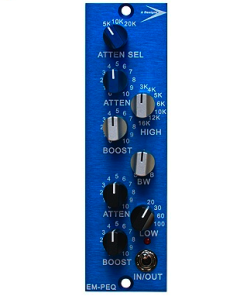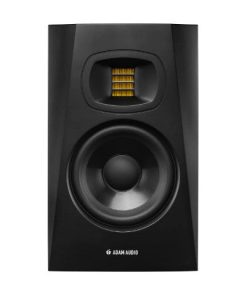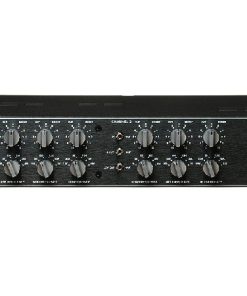Boz Digital Labs Imperial Delay Boz Digital Labs
$ 149,00 $ 59,60
Note for M1 Mac Users: This plugin is not yet compiled to work natively on M1 Macs. We are currently in the process of rewriting it so that it will, but it will take some time. In the meantime, it should work under rosetta on M1 Macs.
The Imperial Delay comprises a highly versatile dual-layer delay with multi-effects, giving you a range that can go anywhere from smooth and warm vintage delay to Gremlins from hell, or the far reaches of outer spatial.
Features
- Powerful delay and muli-FX
- Advanced features for each effect
- Quick to dial in, but tweakable for days
n the tradition of everyone’s favorite studio gear, Imperial Delay gives you maximum sonic possibilities with a minimum of knob twiddling. While the GUI of Imperial Delay is simple and straightforward, it offers far more creative options than its streamlined front panel suggests. Since Imperial Delay can function as both a delay and multi-effects processor, it’s designed to draw minimal CPU power, which enables multiple instances—something that will come in very handy if you want to dedicate its various capabilities to specific applications such as a lead vocal delay, stereo widening effects, modulation and color, and detune and chorus effects. You can also use it as a distortion generator, or throw caution to the wind and create effects previously unheard by human ears.
Imperial Delay—Unique Features:
- Drive, Feedback, Duck, Color, Smear, Modulation, and Chorus controls with on/off buttons and Advanced Section editing controls with presets
- “Drive” adds distortion and harmonics to the input signal
- “Duck” compresses the delayed output letting you have more extreme delay settings allowing your original dry track shine through
- “Smear” softens the sharp edges of the delayed signal enabling it to functionlike reverb, putting it more in the background
- “Offset” delays the right channel; setting becomes a fixed rate relative to the main delay value
- “Color” tone-shaping control adds more color to the feedback signalas it repeats
- “Dynamic Feedback” changes feedback value via threshold (like a gate)
- Advanced section presets let you save individual modifications without changing other settings
Imperial Delay—Just the Facts:
- Dual layer architecture with main and advanced controls
- Independent wet and dry level controls
- Sync mode offers three options: Free, Sync, and Tap
- Delay range of 0.1ms to 10s in Free mode
- Six delay modes
- On/Off for left / right mono channels and center (stereo)
- Feedback with polarity controls to add width or ringing effect
- Presets can be organized into submenus and shared across platforms and Mac/PC operating systems without changing functionality
Main view
The Delay knob is where the royal edicts of Imperial Delay are carried out. Delay modes include Sync, which tracks your DAW project tempo displaying note values (including triplets); Free lets you dial in a delay value from 0.1 to 10s; and Tap lets you tap in a value in the absence of a DAW tempo setting. There is also independent L-C-R channel activation with a mode display. If you click on the mode display, it offers six options, including standard stereo mode; left/right swap; two mono modes; and two ping pong modes.
Offset
Rather than split the interface into two sections with duplicate controls when you select stereo or ping pong modes, Imperial Delay has a simple Offset control that, as its name implies, lets you offset the left and right channel delays (right channel only). Once set, the offset maintains at the same ratio regardless of the main delay setting. For example, with the delay knob set at 344ms with a 10ms offset (354ms right), if you change the main delay setting to 244ms, the right channel will be 254ms, maintaining the 10ms offset.
Effects
Controls for sound design and effects include:
- Drive, which adds distortion and harmonics to the input signal, along with a 20dB overdrive boost.
- Feedback sets how the delay is fed back into itself, along with a secondary feedback value that activates when signal drops below its threshold setting
- Modulation, which is a short-modulated delay within the feedback loop
- Smear, which softens the delayed signal, rounding off the sharp edges of echo to act more like reverb,which can be very useful for instruments with pronounced attacks
- Color, which is a tone-shaping control that adds more color with each feedback pass. It also has a slant filter that enables drastic tonal changes without significant volume changes
- Chorus is a stereo chorus effect that occurs within the feedback loop, that can create higher timing variation between voices
- Duck is a compressor that prevents delays from overwhelming the dry input signal
- Width is a straightforward control for stereo widening
- Dry and Wet knobs provide independent control of input signal and effect levels
Go Deep
While the main control display is easily discernable to those who prefer to forge ahead without reading manuals, there are some hidden gems in the advanced settings windows, which appear at the selection of button labeled “e.” Advanced settings are available for Drive, Feedback, Modulation, Smear, Color, Chorus, and Duck. When the edit button is selected, the relevant controls appear along with a presets button that gives you an idea of the possibilities the advanced section can give you, along with the ability to save your custom presets in submenus. There are also some hidden gems in the advanced modes, such as the ability to select a chorus effect with 2, 4, 8, or 16 voices. (So break with tradition and read the manual.)
Pitch shift
The Pitch function of Imperial Delay also gives you the ability to independently detune left and right channels. It can create interesting effects, as well as doubling. In subtle amounts, it enhances stereo width without phase issues. In fact, when used with the Chorus effect, you can duplicate the Stereoizer* effect found on the tc electronic System 6000 mastering reverb (saving you around $13,000).
Where do we go from here?
The obvious next step is to download a demo version and hear for yourself why Imperial Delay is going to become your go-to delay/multi-effects plug-in processor (and get ready to sell your hardware, you won’t need it anymore).
*tc electronicSystem 6000 Stereoizer effect: This effect, while widely used on records, was only known to a select few (such as Al Schmitt and Michael Wagener) who had access to the tc electronic System 6000. To duplicate the Stereoizer effect on the Imperial Delay, select Free delay, left channel on, right channel off; set delay to 11ms; detune each side ±7 cents(-7 left, +7 right), and add chorus to taste. Try it on a mono acoustic guitar or bass.
Prompt Delivery and Professional Packaging
Our long-standing partnership with UPS FedEx DHL and other global carriers lets us offer a range of shipping services. Our warehouse staff is extremely skilled and will package your items according to our precise and exact specifications. Your goods will undergo an extensive inspection and be safely packaged prior to being sent out. Each day, we ship to thousands of customers in many countries. The fact that we are committed to becoming the biggest online retailer in the World is clear. These warehouses are in Europe in the same way as they are in USA.
Note: Orders that include more than one item are assigned a processing period depending on the item.
Before shipping, we will inspect thoroughly the items you have ordered. Most orders are shipped within 48 hours. Expected delivery time is between 3-7 days.
Returns
Stock is dynamic. It's not entirely managed by us since we are involved with multiple entities, including the factory and the storage. The actual stock can change at any moment. It is possible that your order may be out of stock once the order has been placed.
Our policy lasts for 30 days. We cannot exchange or refund your order if it has been 30 days from the date of purchase.
For your item to be returned it must be in its original packaging, unopened and in the condition you received it. The item must be in its original packaging.
Related products
500 Series
Recording Equipments
Microphones
Monitor
Monitor
Subwoofer
Microphones
Equalizers
Monitor
Equalizers
Recording Equipments
Microphones
Microphones
Accessories
Monitor
Headphones
Microphones
Microphones
Monitor Systems
Accessories
Mic Preamp
Accessories




























































